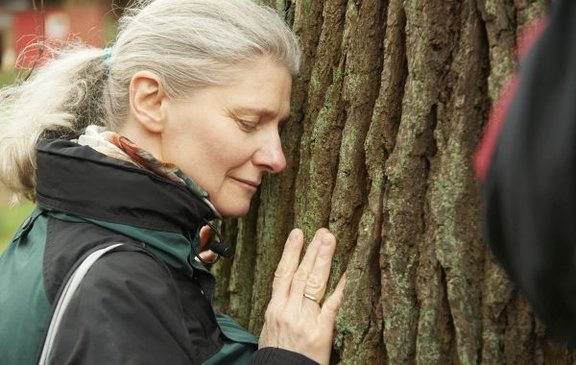LIFE The infrastructure in modern cities of the world, so called metropolitan areas, is designed and developed from an economic and infrastructural point of view. The City of Peace, however, shines towards the people in its green robe. It invites people to live, not just to reside or to work, meets all requirements and has its inhabitants in focus. This living space is made possible by reducing individual motorized traffic to a minimum, thereby conserving spatial resources. The buildings and traffic areas largely blend into the landscape. Its scenery is a decisive design element. Not only does the construction method externally contribute to the connection with landscape and nature.
It also takes into account basic principles and models found in nature. This bionic and modular approach runs through the entire process from planning to structural implementation and beyond that to subsequent remodeling. Economical use of materials and energy and prevention of irreversible environmental damage are basic principles of all concepts and their implementation in terms of sustainability. However, economical use does not mean renouncing comfort, but rather the termination of the exploitation of nature, the environment and human beings. All inhabitants of the city, including plants and animals, find equal attention and appreciation, their cohabitation reveals a new quality, that of Extended Humanism.
ENERGY AND STRENGTH The energy sector includes their efficient generation, low-loss transmission to users, the possibility of recovery as well as low-energy systems and energy storage. Primarily "renewable" sources such as sunlight, geothermal energy, wind and hydrogen technology and secondary electricity from fusion power plants for the higher demand are the basis. In the future, great attention will also be paid to research into "free energy". In the energy sector, efficient use always remains a driving force for new developments.
REUTILIZATION The use of materials in all areas of a City of Peace is subject not only to their appropriate use, but also to the concept of returning them to circulatory systems. Good separability of the substances in the recycling process is a quality feature, as well as the interchangeability of individual parts and assemblies. A wide range of standards in the most diverse systems ensure simplified repair options.
WATER This resource, as the basis of life and part of the natural systems, receives special attention. Like all of Planet Earth's offerings to its inhabitants, the element of water is held in the highest esteem. The natural discharge of the water is optimally promoted.
Where structural conditions influence this, technical solutions such as retaining facilities with metered transfer, runoff in cascades or infiltration in built-up areas provide support. Minimal soil sealing is therefore a high priority.
SELF SUPPLY The City of Peace and its environment are not only elements of consumption, but also of sustainable production. The principle of self-supply can also be found in the food sector. The seasonal supply from the field, the production in the greenhouse and also the use of small inner-city areas serve the self-supply system. Soil protection, its preservation and improvement through controlled organic input are essential and lived principles for this. Direct trade with other producers will be the second major pillar of food supply. A high percentage of citizens feed on seasonal products.
ILLUMINATION Sustainability is also evident at night. The light of the City of Peace accompanies the citizens on their nocturnal route without becoming a light trap for insects. Public lighting adjusts to the needs on paths and roads. So, we just see the city sparkle "quietly".
SILENCE The City of Peace is a harmonious place. Everywhere there are quiet zones and quiet rooms. Playing kids, people playing music or talking and the singing of the birds create the sound of the location.





